Xingzhou Zhang
E3-UAV: An Edge-based Energy-Efficient Object Detection System for Unmanned Aerial Vehicles
Aug 09, 2023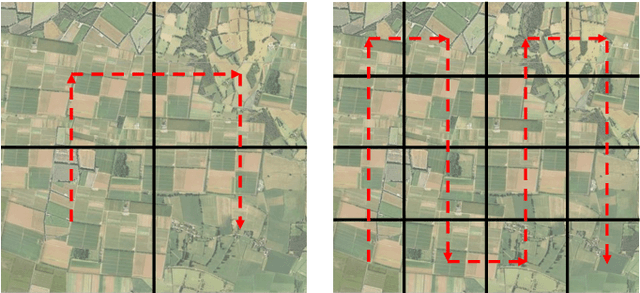
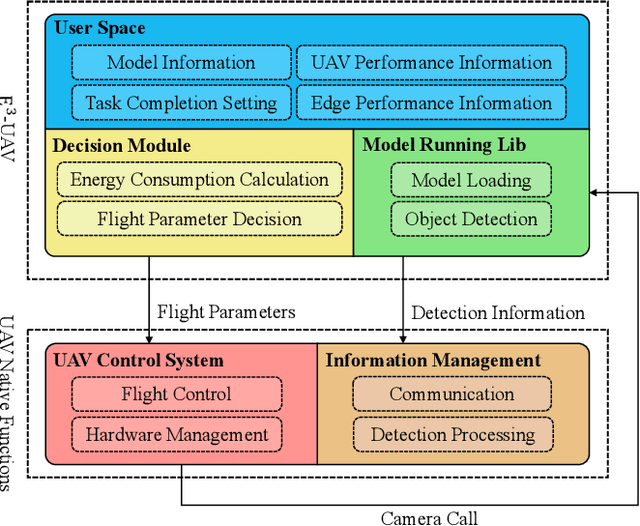
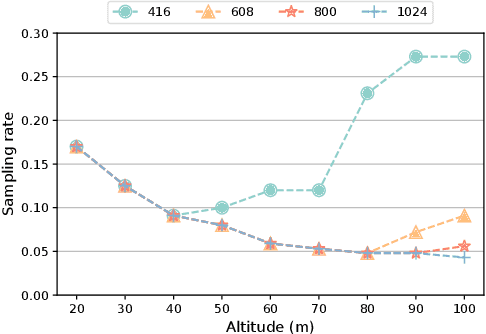
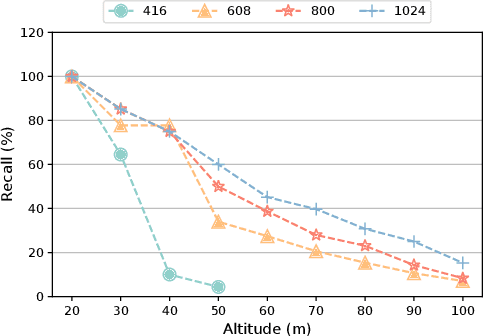
Abstract:Motivated by the advances in deep learning techniques, the application of Unmanned Aerial Vehicle (UAV)-based object detection has proliferated across a range of fields, including vehicle counting, fire detection, and city monitoring. While most existing research studies only a subset of the challenges inherent to UAV-based object detection, there are few studies that balance various aspects to design a practical system for energy consumption reduction. In response, we present the E3-UAV, an edge-based energy-efficient object detection system for UAVs. The system is designed to dynamically support various UAV devices, edge devices, and detection algorithms, with the aim of minimizing energy consumption by deciding the most energy-efficient flight parameters (including flight altitude, flight speed, detection algorithm, and sampling rate) required to fulfill the detection requirements of the task. We first present an effective evaluation metric for actual tasks and construct a transparent energy consumption model based on hundreds of actual flight data to formalize the relationship between energy consumption and flight parameters. Then we present a lightweight energy-efficient priority decision algorithm based on a large quantity of actual flight data to assist the system in deciding flight parameters. Finally, we evaluate the performance of the system, and our experimental results demonstrate that it can significantly decrease energy consumption in real-world scenarios. Additionally, we provide four insights that can assist researchers and engineers in their efforts to study UAV-based object detection further.
* 16 pages, 8 figures
HIT-UAV: A High-altitude Infrared Thermal Dataset for Unmanned Aerial Vehicles
Apr 07, 2022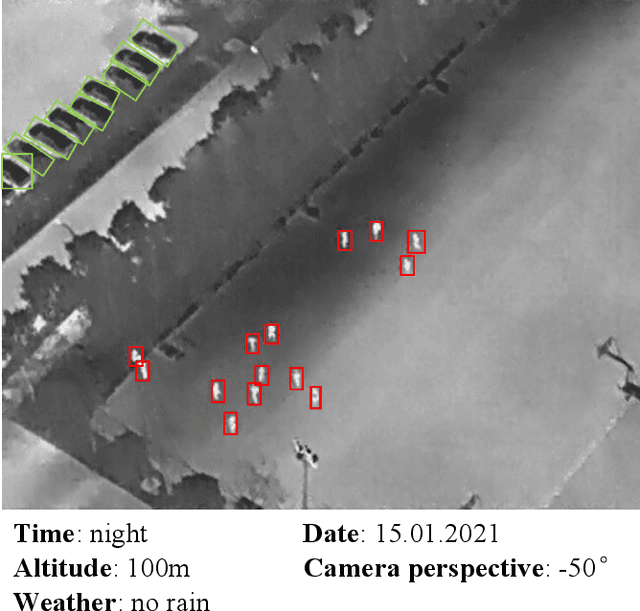
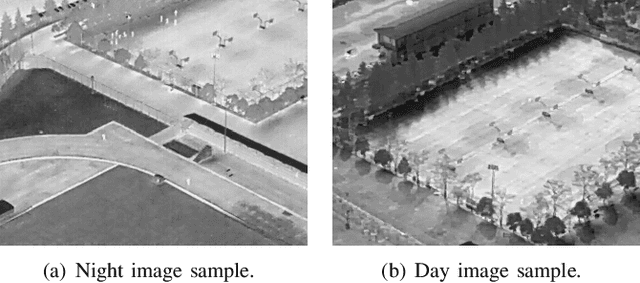
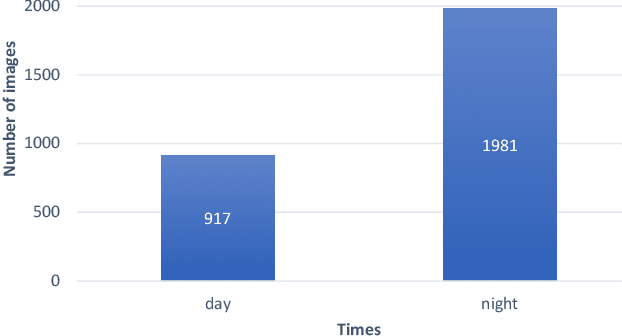
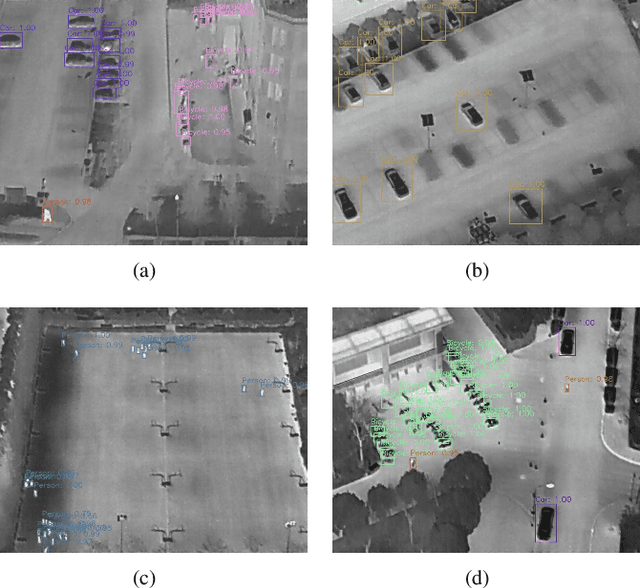
Abstract:This paper presents a High-altitude infrared thermal dataset, HIT-UAV, for object detection applications on Unmanned Aerial Vehicles (UAVs). HIT-UAV contains 2898 infrared thermal images extracted from 43470 frames. These images are collected by UAV from schools, parking lots, roads, playgrounds, etc. HIT-UAV provides different flight data for each place, including flight altitude (from 60 to 130 meters), camera perspective (from 30 to 90 degrees), date, and daylight intensity. For each image, the HIT-UAV manual annotates object instances with two types of the bounding box (oriented and standard) to address the challenge that object instances have a significant overlap in aerial images. To the best of our knowledge, HIT-UAV is the first publicly available high-altitude infrared thermal UAV dataset for persons and vehicles detection. Moreover, we trained and evaluated the benchmark detection algorithms (YOLOv4 and YOLOv4-tiny) on HIT-UAV. Compared to the visual light dataset, the detection algorithms have excellent performance on HIT-UAV because the infrared thermal images do not contain a significant quantity of irrelevant information with detection objects. This indicates that infrared thermal datasets can significantly promote the development of object detection applications. We hope HIT-UAV contributes to UAV applications such as traffic surveillance and city monitoring at night. The dataset is available at https://github.com/suojiashun/HIT-UAV-Infrared-Thermal-Dataset.
pCAMP: Performance Comparison of Machine Learning Packages on the Edges
Jun 06, 2019
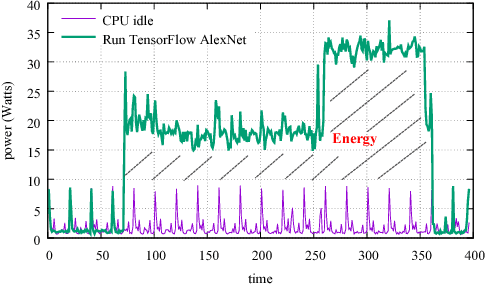

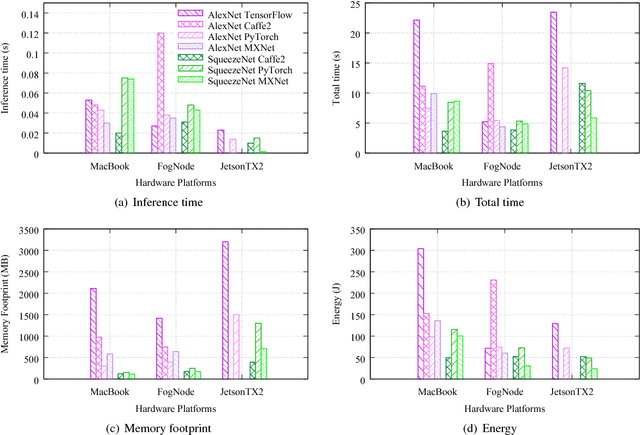
Abstract:Machine learning has changed the computing paradigm. Products today are built with machine intelligence as a central attribute, and consumers are beginning to expect near-human interaction with the appliances they use. However, much of the deep learning revolution has been limited to the cloud. Recently, several machine learning packages based on edge devices have been announced which aim to offload the computing to the edges. However, little research has been done to evaluate these packages on the edges, making it difficult for end users to select an appropriate pair of software and hardware. In this paper, we make a performance comparison of several state-of-the-art machine learning packages on the edges, including TensorFlow, Caffe2, MXNet, PyTorch, and TensorFlow Lite. We focus on evaluating the latency, memory footprint, and energy of these tools with two popular types of neural networks on different edge devices. This evaluation not only provides a reference to select appropriate combinations of hardware and software packages for end users but also points out possible future directions to optimize packages for developers.
OpenEI: An Open Framework for Edge Intelligence
Jun 05, 2019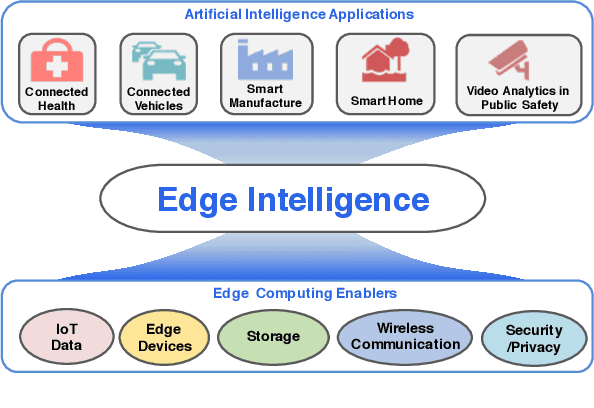
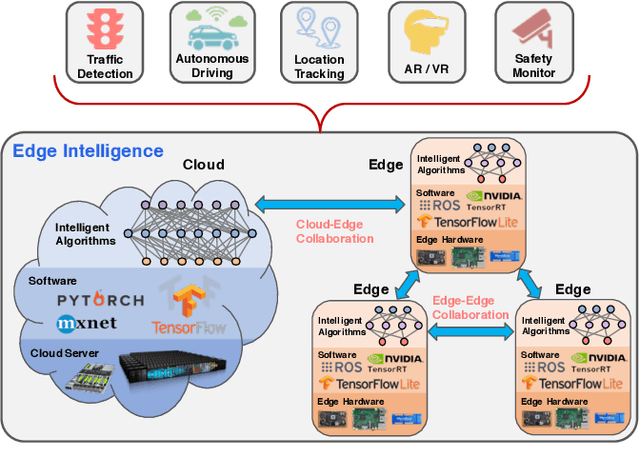
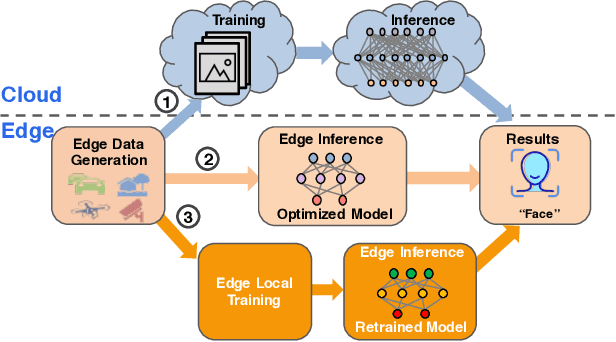
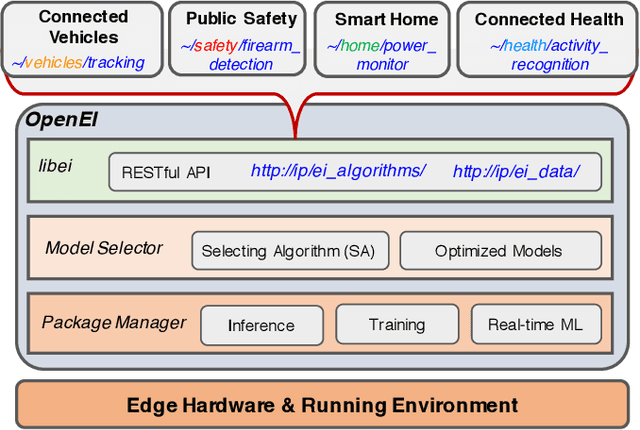
Abstract:In the last five years, edge computing has attracted tremendous attention from industry and academia due to its promise to reduce latency, save bandwidth, improve availability, and protect data privacy to keep data secure. At the same time, we have witnessed the proliferation of AI algorithms and models which accelerate the successful deployment of intelligence mainly in cloud services. These two trends, combined together, have created a new horizon: Edge Intelligence (EI). The development of EI requires much attention from both the computer systems research community and the AI community to meet these demands. However, existing computing techniques used in the cloud are not applicable to edge computing directly due to the diversity of computing sources and the distribution of data sources. We envision that there missing a framework that can be rapidly deployed on edge and enable edge AI capabilities. To address this challenge, in this paper we first present the definition and a systematic review of EI. Then, we introduce an Open Framework for Edge Intelligence (OpenEI), which is a lightweight software platform to equip edges with intelligent processing and data sharing capability. We analyze four fundamental EI techniques which are used to build OpenEI and identify several open problems based on potential research directions. Finally, four typical application scenarios enabled by OpenEI are presented.
 Add to Chrome
Add to Chrome Add to Firefox
Add to Firefox Add to Edge
Add to Edge